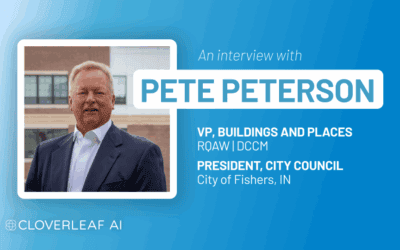By Jeremy Becker, Founder and CRO at Cloverleaf AI
If you’ve made it this far, you know the score.
Tariffs, inflation, labor shortages, disappearing federal aid—state and local governments are under pressure from all sides. And while that pressure is breaking a lot of plans, it’s also revealing a massive opportunity for vendors who can sell, deliver, and adapt differently.
This isn’t just about surviving economic turbulence. It’s about building a go-to-market strategy that wins because of it.
Let’s talk about what that actually looks like.
First, Accept the Premise: Volatility Is the New Normal
You can’t build a resilient strategy if you’re still waiting for things to “go back to normal.”
- Federal stimulus money? Drying up.
- Construction inflation? Still hovering around 6–7% year-over-year in many regions.
- Tariff shifts? Ongoing, especially in critical categories like steel, electronics, and construction materials.
- Capital budgets? Being rewritten in real time. As we saw in Seattle, Suffolk, and Southington—cost spikes don’t kill projects outright, but they absolutely change the scope, the timing, and the procurement behavior.
So the question isn’t how do we avoid disruption—it’s how do we win within it?
1. Flex Your Pricing Strategy
Stop treating pricing like it’s carved in stone. In volatile markets, buyers value adaptability more than discounts.
Tactics:
- Offer phased implementation with pricing tied to each stage (protects you and the buyer).
- Use index-based pricing that accounts for material/labor inputs.
- Build in scope-based tiers: if inflation hits hard, your buyer already knows what the backup plan looks like.
“We’ll reduce these three features if construction costs exceed X%” is better than forcing a total project reset.
2. Pre-Negotiate Trust
What builds trust in procurement? Certainty in uncertainty.
Tactics:
- Include optional alternates or add/deduct line items in your proposals.
- Provide pre-written change order templates and walk buyers through how to use them.
- Prepare grant alignment docs to help buyers secure matching funds or contingency financing.
This is what turns you from “vendor” into “partner”—you’re not just selling; you’re helping them get to yes inside their own system.
3. Target the Right Projects
Not all opportunities are created equal. In a tight fiscal climate, you need to prioritize winnable, fundable, politically backed projects.
How:
- Look for projects backed by bonds, referendums, or utility revenues—these tend to be insulated from immediate budget cuts.
- Partner with cities/counties leveraging Army Corps, FEMA, or infrastructure grants (as in Santa Rosa, CA).
- Track project timelines tied to elections—if it’s got a mayor’s name on it, it’s more likely to close.
The right intel upfront saves your reps from chasing dead-end deals that look good on paper but won’t survive a mid-cycle review.
4. Rebuild Your Sales Process for Long-Term Engagement
Most public sector deals don’t die—they drift. And in this climate, you need a sales process built for stamina, not speed.
Upgrades to Make:
- Treat procurement check-ins like account management: regular updates, collaborative docs, timeline refreshes.
- Build SLG-specific sales enablement collateral—grant guides, inflation impact memos, change management templates.
- Track political, funding, and economic milestones as part of your CRM process.
This isn’t just pipeline management. This is risk mitigation and relationship building—two things that feed each other in SLG.
5. Position Around Resilience
If you want to stand out, position your product or service not just as “cheaper” or “faster,” but as more resilient.
Buyers want to know:
- Will this survive a budget shift?
- Can we roll it out in stages?
- If things go wrong, do we have room to maneuver?
Your marketing, messaging, and proposal language should reflect this. Resilience sells now.
My Take
In state and local government, the best GTM strategies aren’t built for the best-case scenario—they’re built for the chaos.
If you can navigate delays, cost spikes, and shifting scopes while making your buyer look like the smartest person in the room, you will win more often and more consistently than the vendor who just shows up with a proposal and a price tag.
Resilience is the strategy.
And trust is the result.


This wraps up our three-part series on Tariffs, Trust, and SLG Sales in a Volatile Market.
If you’re rethinking how to align your sales team with today’s real-world constraints—let’s talk. At Cloverleaf AI, this is what we live and breathe.
–







